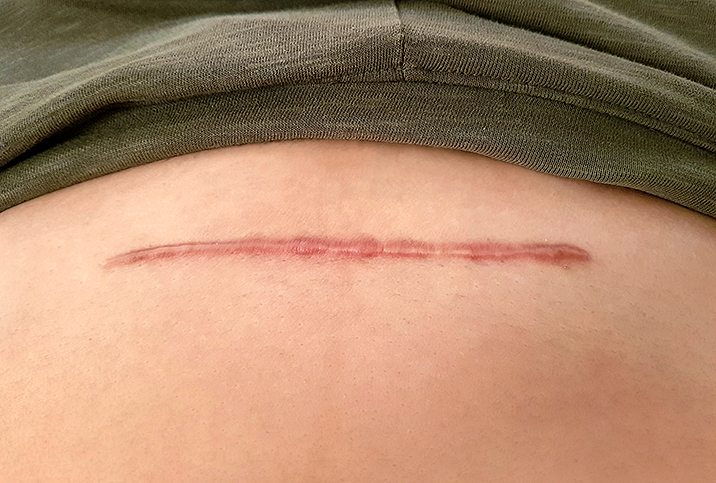Speeding Up the Detection of Womb Cancer

An estimated 65,950 people in the United States will be diagnosed with uterine (womb) or endometrial cancer in 2022, according to the American Society of Clinical Oncology. This makes it the fourth most common cancer in American women.
"Womb cancer is the most common cancer that no one has heard of," said Athena Lamnisos, the CEO of the Eve Appeal, a charity in the United Kingdom focused on gynecological cancers.
Research has been conducted on a groundbreaking new test that can accurately identify women with womb cancer using a noninvasive sample from the cervix or vagina.
The study, recently published in the Journal of Clinical Oncology, was funded by the Eve Appeal along with the European Union's Horizon 2020 and European Research Council programs, and the regional government of the Tirol region of Austria (Land Tirol).
The researchers used 1,288 cervical screening samples from women with and without womb cancer collected by a large team of investigators across the U.K. and Europe. The test successfully identified all eight womb cancers within a cohort of 63 women presenting with postmenopausal bleeding, and only a few women without cancer had a positive result, making the test more specific than transvaginal ultrasounds, 89 percent, specifically.
The new test could speed up the diagnosis of womb cancer and reduce the need for more invasive procedures such as a hysteroscopy or biopsy. To learn more about the new test, named WID-qEC, we spoke to researchers from the clinical trial.
What was the reason behind the study?
"The research was done to improve on the performance of existing methods of womb cancer detection," said Martin Widschwendter, professor of cancer prevention and screening, and director of the European Translational Oncology Prevention and Screening (EUTOPS) Institute at the University of Innsbruck, Austria. "Current tests are not sufficiently specific to detect cancer without requiring many women to undertake additional invasive tests even though they may not have cancer."
Widschwendter explained that more than 90 percent of womb cancer diagnoses are reported due to abnormal bleeding. However, most women with abnormal bleeding do not have cancer:
- In postmenopausal women, only around 10 percent with abnormal bleeding have womb cancer.
- In premenopausal women 40 to 50 years old, only 0.5 percent with abnormal uterine bleeding have womb cancer.
"Typically, investigations to detect womb cancer will involve a transvaginal ultrasound examination followed by a biopsy, if required as a result of the ultrasound," said Chiara Herzog, Ph.D., a molecular medicine research fellow and postdoctoral scientist at the EUTOPS Institute and University College London, and first author of the paper.
Issues with current womb cancer tests
Herzog explained several issues with transvaginal ultrasounds, biopsies and hysteroscopies. Some of the key problems are:
- The thickness of the womb lining (the endometrium) is measured to detect womb cancer. Women with a negative result are correctly identified as not having the disease. However, with a positive endometrial thickness result, transvaginal ultrasound is less effective at discriminating between those with and without the disease, and so many women with benign disease undergo further invasive diagnostic testing.
- Transvaginal ultrasound is not as effective at detecting womb cancer in postmenopausal Black women. In a modeling study, the sensitivity of a transvaginal ultrasound threshold of 5 millimeters or more of endometrial thickness for identifying womb cancer in Black women was 43.7 percent compared with 86.0 percent in white women. These statistics mean transvaginal ultrasound misses four times more cases of womb cancer in Black women than in white women.
- Measurements of womb lining thickness in premenopausal women to detect womb cancer are problematic because the thickness of the womb lining depends on the day of the menstrual cycle.
- Pipelle biopsies are associated with some pain and anxiety, and studies show a high failure rate (greater than 20 percent) for biopsy collection by this method.
- Some women find hysteroscopy painful and distressing and some are left in extreme pain. In a survey conducted by the Campaign Against Painful Hysteroscopy, reported in 2020 in Health Service Journal, of 860 women surveyed, 750 were left distressed, tearful or shaken by the procedure.
Bearing these factors in mind, Widschwendter and his team developed the WID-qEC test. The test examines three regions of DNA that are only methylated in cancer. Polymerase chain reaction (PCR) testing measures DNA methylation levels. PCR testing is relatively low cost and used routinely in clinical diagnostic labs, for example, in coronavirus detection.
What is Lynch syndrome?
According to Herzog, Lynch syndrome is an inherited condition that increases your risk of developing some cancers, including womb, ovarian and bowel cancer.
The syndrome is caused by an alteration in one or more mismatch repair genes (MLH1, MSH2, MSH6, PMS2 and EPCAM) whose function is to repair errors that may arise in the DNA code, which in turn stops people from developing cancer.
"Families that have Lynch syndrome usually have more cases of colon or womb cancer than would typically be expected," Herzog said. "A number of these cases may occur at an earlier age, under 50, than they might in the general population."
Women with Lynch syndrome are at increased risk of both womb and ovarian cancer and may be offered a hysterectomy (removal of the womb) or salpingo-oophorectomy (removal of the fallopian tubes and ovaries), usually after the age of 40.
For women who wish to postpone preventive surgery and preserve their fertility for a few years, hysteroscopy and biopsy might be offered once a year to look for womb cancer, Herzog said.
How can the test identify womb cancer in Black women?
As mentioned, Herzog said transvaginal ultrasound is not as effective at detecting womb cancer in postmenopausal Black women. She said scientists believe this is due to the higher prevalence of fibroids and non-endometrioid histologic types of cancer in Black women.
As a result, womb cancer is often detected at a more advanced stage in Black women, leading to poorer outcomes.
"Our initial data shows that the WID-qEC test works equally well in all women, regardless of their ethnicity. Further studies are being done to confirm this," Herzog said.
What are the next steps?
According to Widschwendter and Herzog, the research team is undertaking several additional studies to further validate the results published in the Journal of Clinical Oncology.
"Additional studies are being planned in Black women, women with Lynch syndrome and those who have had womb cancer and are being monitored for recurrent disease," Widschwendter said.
The researchers said the test is expected to be marketed in the near future in central Europe.
"This research shows real promise in reducing the time to diagnose, providing a specific diagnosis for everyone, and reducing the need for painful and invasive interventions," Lamnisos said. "It really does bring early detection of cancer one stage closer."


















